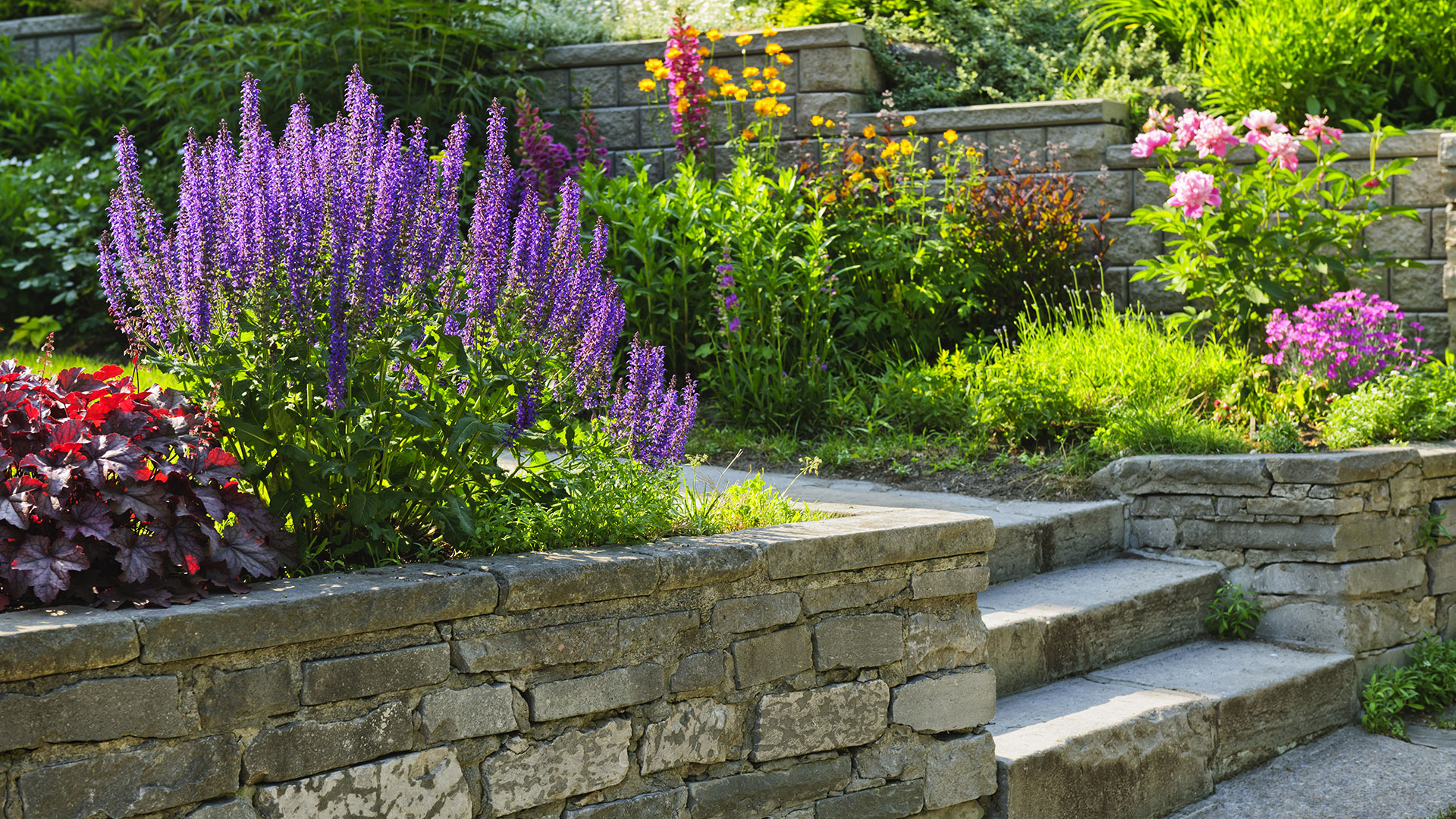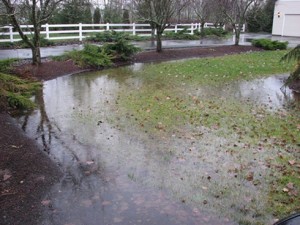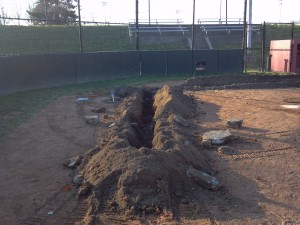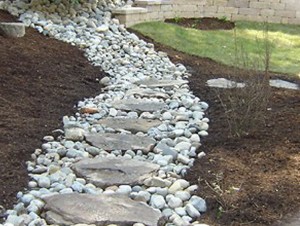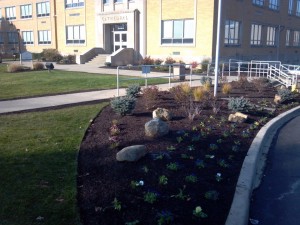Today we are going to talk about drainage issues, and one method we like to employ here at Turf Dogs. As a full service landscape, irrigation, and athletic field company, we are constantly manipulating the way water drains. It’s important because too much water can kill plants and grasses, it’s a nightmare for sloped mulched areas, it can damage athletic fields causing thousands of dollars in damage, and it can even breed insects in areas where they aren’t wanted.
It’s also important to keep your office or residence looking great. So we have made the French drain our go-to method for getting water out of the areas it does not belong. It’s a very simple process, and you can make them completely invisible, as they can be installed under your lawn or even a plant bed.
Here’s how it works. A trench is excavated to size, depending on the amount of water that needs to drain, and the linear space available. Usually the excavated area is 6-10” wide, a minimum of 2’ deep, and at least 36” long. On large athletic fields the standard is 50’ in length and 3’ in depth.
Once the area is excavated a thin layer, roughly 4-5” of washed stone is installed in the bottom of the trench.
You then install perforated ADS drain-line, that black corrugated pipe you see in big rolls, the length of your drain. You can use any size as long as there is space in-between the walls of the trench for the stone.
The next step is to either fill the rest of the cavity with washed stone, or fill with stone to 6” below grade, and install topsoil on top of that. The difference is, of course, with top-soil you can grow plants or grass to hide the drain completely. Usually when the stone is exposed, we install different colored flagstone steps and it makes for a great path. On athletic fields, the playing surface is installed 5” deep on top of the stone.
One of the only downfalls to this method is due to the depth it can get kind of dicey with underground cables and irrigation. Plus you just don’t know what’s 3’ down from the distant past as you can see in the picture.
The bottom line is, if it’s what the customer needs, we can install them virtually anywhere.
So there you have it! That’s one of the best ways to move small to moderate amounts of water. It’s cheap, it’s simple, and it looks great. Call or click today for a free quote and solve your standing water woes today.
